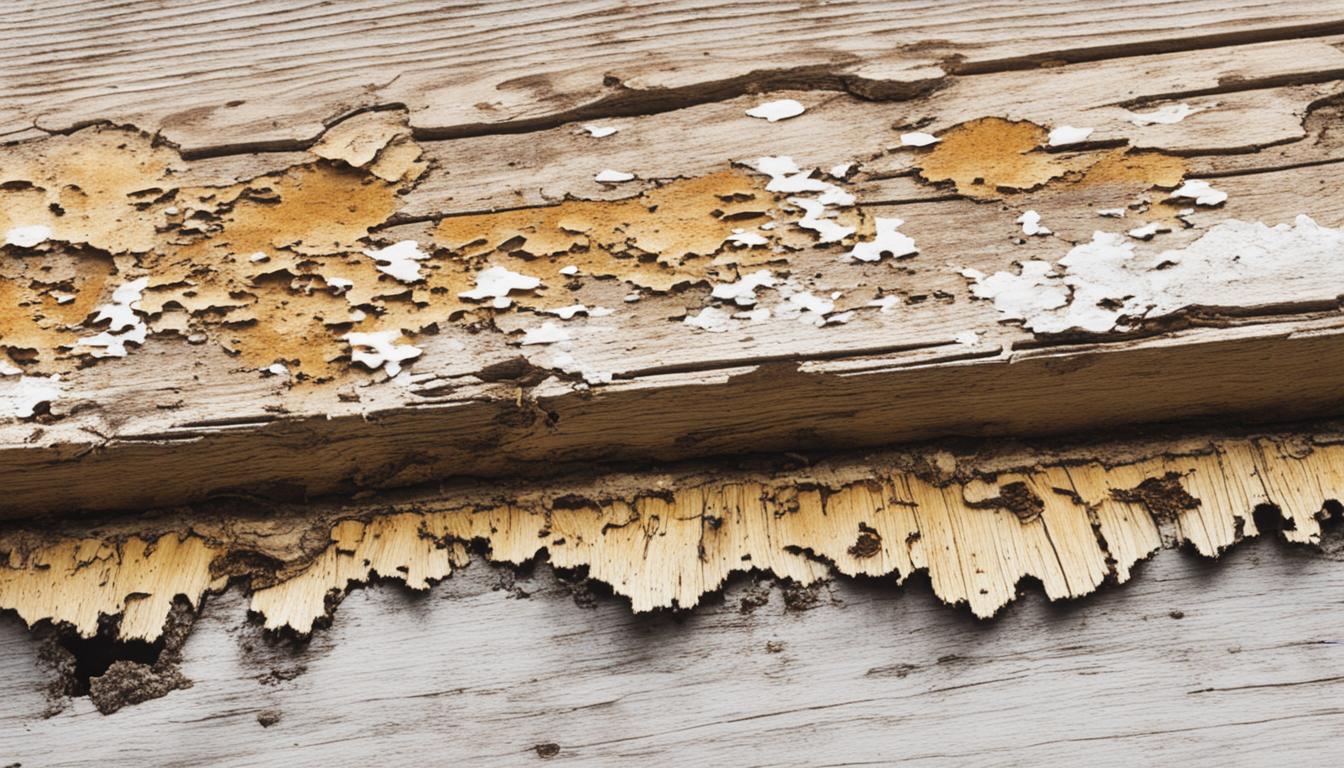
Does Bleach Eradicate Dry Rot Fungus Effectively?
In the battle against dry rot, homeowners often seek effective solutions that can eliminate the destructive fungus. One common remedy that has gained attention is bleach. But the question remains: will bleach kill dry rot fungus? In this section, we will delve into the topic of using bleach as a treatment for dry rot.
Bleach treatment for dry rot has been a subject of debate among experts. While some argue that bleach can effectively remove dry rot, others believe that it may only provide temporary relief, with the fungus potentially reappearing over time.
Although bleach is known for its disinfecting properties, its effectiveness in eradicating dry rot depends on various factors. It is essential to understand the limitations and potential benefits before resorting to bleach as a solution for dry rot removal.
Key Takeaways:
- Bleach treatment for dry rot is a debated topic among experts.
- The effectiveness of bleach in eradicating dry rot may vary.
- Before using bleach, it is crucial to consider potential limitations and the possibility of the fungus reappearing.
- Consulting with a professional to assess the severity of the dry rot issue is recommended.
- Developing a comprehensive dry rot treatment plan may involve additional steps beyond bleach application.
Understanding the Effectiveness of Bleach on Dry Rot
In the quest to eliminate dry rot fungus, many homeowners wonder if bleach can provide an effective solution. In this section, we will explore the potential benefits and limitations of using bleach to combat dry rot. Additionally, we will discuss recommended bleach concentrations and application methods for effectively treating dry rot.
The Power of Bleach: Can it Get Rid of Dry Rot?
Bleach has long been recognized for its antimicrobial properties and its ability to kill various types of fungi, including mold and mildew. However, when it comes to dry rot fungus, the effectiveness of bleach may be limited. Dry rot is caused by a specific type of fungi known as Serpula lacrymans, which has a unique ability to penetrate deep into wood and thrive in environments with high moisture content.
**Note:** While bleach may eliminate surface mold and address some visible signs of dry rot, it may not completely eradicate the underlying fungus or prevent its future growth.
Using Bleach to Kill Dry Rot: Pros and Cons
When considering the use of bleach for dry rot, homeowners should weigh the potential benefits against the limitations. Here are some key factors to consider:
Benefits:
- Bleach can help remove surface stains and discoloration caused by dry rot fungus.
- It may temporarily suppress the growth of dry rot fungus and prevent further wood decay.
- Bleach is readily available and relatively affordable compared to other treatment options.
Limitations:
- Bleach may not penetrate deep into the wood to reach the root of the dry rot fungus.
- It does not provide long-term protection against future dry rot growth.
- High concentrations of bleach can damage wood surfaces and surrounding materials.
Recommended Bleach Concentrations and Application Methods
When using bleach to tackle dry rot, it is important to follow proper procedures to maximize effectiveness and minimize potential damage. Here are some general guidelines:
- Select a bleach solution with a concentration of 10% or less. Higher concentrations may cause harm to the wood.
- Prepare the solution by diluting bleach with water in the recommended ratio, usually one part bleach to nine parts water.
- Apply the bleach solution to the affected areas using a spray bottle or a brush, ensuring thorough coverage.
- Allow the bleach solution to penetrate the wood for approximately 15 to 20 minutes.
- Rinse the treated areas with clean water to remove any residual bleach.
- Consider consulting a professional for more extensive dry rot treatment or if the damage is severe.
**Note:** Prioritize safety when using bleach. Wear protective gloves, goggles, and respiratory equipment to avoid skin and eye irritation, as well as inhalation of fumes.
Conclusion
In conclusion, bleach can be an effective treatment for dry rot when used properly. Throughout this article, we have explored the efficacy of using bleach to eliminate dry rot fungus and discussed the process of using bleach for dry rot removal.
Our findings suggest that bleach can kill dry rot fungus effectively by disrupting its growth and destroying its spores. However, it is important to note that bleach alone may not completely eradicate dry rot. It is recommended to incorporate additional steps into a comprehensive dry rot treatment plan for optimal results.
When using bleach as a dry rot treatment, it is crucial to follow the manufacturer’s instructions and safety precautions. Proper ventilation and protective gear should be used to minimize exposure to the bleach fumes and chemicals.
In summary, while bleach can be a valuable tool in combating dry rot, a holistic approach that includes identifying and addressing the underlying moisture source, repairing any structural damage, and implementing preventive measures is essential for long-term success in eliminating dry rot and preventing its recurrence.




